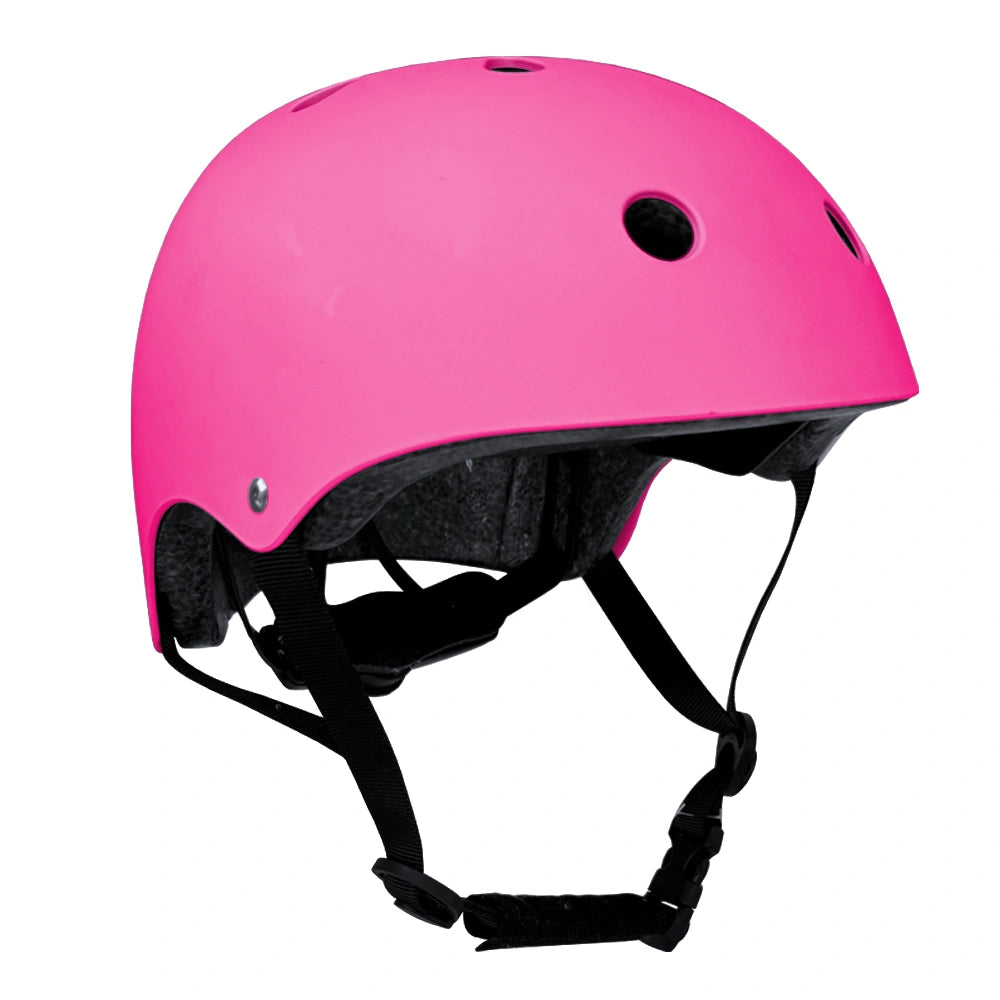Picture this: you're cruising down the street on your shiny new scooter, feeling the wind in your hair and the thrill of the ride. But wait! Before you zoom off into the sunset, it's important to remember that safety comes first. Yes, we know, safety sounds about as exciting as watching paint dry, but trust us, it's the key to avoiding those oops-a-daisy moments that can turn your joyride into a not-so-fun experience.
Why is scooter safety important?
Kids can get hours upon hours of enjoyment out of their kids scooter, not to mention the physical and social benefits their hobby can also provide. But without wanting to take any of the fun out of your little daredevil’s pastime, as a parent you want to know your child is using their scooter safely and responsibly.
This is why teaching your child the fundamentals of kids scooter safety is paramount. In this guide, we'll take you through the crucial steps of scooting safely, covering everything from maintaining their scooter and wearing a helmet to developing traffic awareness.
Step 1: Get The Right Safety Gear
The first step to making sure your child scoots safely is to make sure they have the correct safety equipment. After all, it’d make little sense talking about safety only to send them out without a helmet! So here’s what you’ll need.
Helmet
Undoubtedly the most important aspect of scooter safety, a kids scooter helmet is simply a must. This should also be well-fitted to prevent movement on the head.
Teach your child that wearing a kids scooter helmet is important for protecting their head, and set a good example by wearing your own whenever you’re cycling or scooting.
Protective Pads
Elbow and knee pads provide an extra layer of protection. This can be especially important when your child is learning to balance and control their scooter when falls and collisions are more likely.
Closed-Toe Shoes
Encourage your child to wear sturdy, closed-toe shoes that offer good support. This reduces the risk of them injuring their feet when they’re using their scooter.
Step 2: Choose The Correct Scooter
The next aspect of scooter safety you need to think about is choosing the right scooter. Riding one that’s too big, too small or unsuitable for your child’s skill level could make their scooting unsafe.
Most scooters are sized based on height and age, so try to match your child with an appropriate model. Having said that, not all same-age children are equal in height so buying scooters for kids isn’t an exact science!
Try to find one that strikes a nice balance. If you’re in doubt or you’re struggling to find a suitable scooter then speak to us and we’ll be happy to help you out.
Step 3: Supervision And Practice
This step is more for the parents than the children. Start them off in a safe and controlled environment until they get used to using their new scooter. Starting something new usually takes time to get used to, but remember, practice makes perfect!
Additionally, try to keep an eye on their progress and make sure they’re following the guidance you’ve set for them. As they’re just starting out, they might forget some of the instructions but with some careful monitoring and gentle reminders, they should soon pick it up.
Step 4: Map Out Some Rules
Once you’ve got all the right safety equipment, a suitable scooter and they’ve shown they can use their scooter safely, it’s time for them to put their skills to the test. But before they hit the road (or skatepark) set out some rules that will help them stay safe.
Stay On The Path
If they're going to be using their scooter in the streets then encourage them to use the path whenever possible. Explain the dangers of the road to instil the message as much as possible. Scooter Safety is a must.
Stay Aware At All Times
To help them avoid crashes or falls, emphasise the importance of being aware of their surroundings. This is especially true whenever they’re riding near roads or in close proximity to other scooters.
Step 5: Maintenance
Another one for the parents to remember – make sure you give the scooter a quick inspection every now and then. Scooters tend to be hard-wearing and durable, but checking the wheels and handlebars helps ensure the scooter is in a safe condition.
If you find any damage or parts of the scooter that look like they’re in need of replacing, don't put this off as scooter safety is obviously the most important consideration.
Step 6: Regular Check-Ins
Scooter safety should be an ongoing conversation between you and your child. Regularly check in with them about their experiences and any safety concerns they may have encountered. Always remind them of the importance of safety gear and responsible riding.
So those are the main things to consider when teaching your child the basics of scooter safety. Whether they’re riding black scooters or ones in vibrant colours, whenever you’re purchasing scooters for kids, remember these steps, and your child should enjoy their new hobby as safely as possible.














